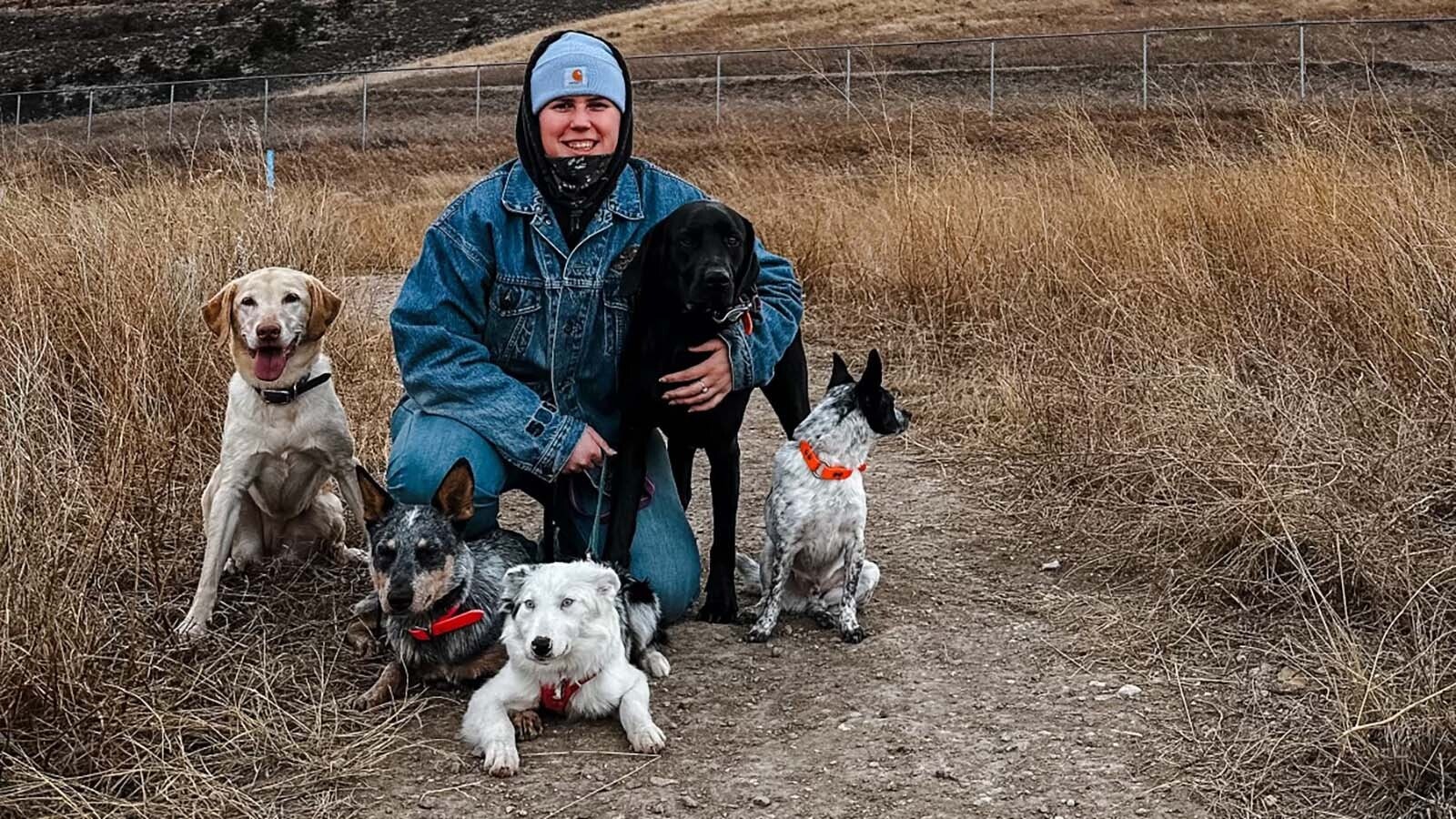A former World War II pilot involved in the experimental and controversial use of silver iodide to seed clouds and stop hailstorms in eastern Wyoming and western Nebraska in 1955 boasted a special ride.
When James M. Cook arrived at the Scottsbluff, Nebraska, airport in late May 1955 from Texas, his P-51 Mustang World War II-era fighter had a new silver iodide burner on the side of its long nose between the exhaust and the cockpit.
The burner was designed to keep burning at high altitudes and had a greater iodide particle output than his previous burner.
But the silver iodide burner could not hold a candle to the rest of the plane’s reputation.
The P-51 had been owned by Hollywood star and World War II bomber pilot Jimmy Stewart.
It had set several speed records and once transported special newsreel footage of England’s Queen Elizabeth’s coronation from Canada to a waiting news station on the East Coast.
And before June 1955 was over the plane — notably forbidden from Wyoming skies — was smashed to pieces in a west Nebraska pasture as it took off to seed thunderheads at the Wyoming border.
Like a mythical Phoenix, it was resurrected decades later and toured this summer around the nation as the plane once owned by Stewart.
Jim Duncan, of Scottsbluff, recalls the plane as a 16-year-old whose ranching grandfather and dad along with other area farmers and ranchers had recruited Cook as part of a test of whether silver iodide could help prevent the loss of sugar beets, dry beans, corn and alfalfa due to hail each year.
“My granddad had a partner, and they were together, and his partner was kind of instrumental in getting (Cook) here to do this,” Duncan recalled. “And he would come around with this partner. He was at our place a time or two.”
Newspapers from the time show that Cook and hail suppression efforts through cloud seeding then as now in Wyoming raised some eyebrows.
Wyoming Protests
The Casper Tribune-Herald reported on Aug. 23, 1954, that the Wyoming Weather Modification Board ordered the Valley Hail Suppression Association of Morrill, Nebraska, to stop cloud seeding after 228 Wyoming farmers protested that the efforts had led to southeastern Wyoming’s drought that year.
State Engineer L.C. Bishop said the Nebraska group had signed a contract with area farmers to seed clouds in the Wheatland-Guernsey area to reduce crop damaging hail and had applied for a permit in Wyoming but that it had not been granted.
The next year, Cook spoke with various eastern Wyoming agricultural groups and was accused by Wheatland farmers and ranchers of seeding clouds over Laramie Peak and the Laramie River.
Cook denied making any flights over Platte County. However, farmers and ranchers in eastern Goshen County and their state representative and senator were asking for the hail suppression flights in 1955, the Casper Tribune-Herald reported on March 2, 1955.
In the end, the Weather Modification Board on March 15 denied Cook the opportunity to seed clouds over Goshen County in Wyoming.
Duncan said Cook would fly into thunderclouds and seed them with the silver iodide with the purpose of producing rain and not hail. He said his understanding was that Cook flew to the Wyoming border to get to the clouds before their arrival over Morrill and Scottsbluff.
On the ground, farmers and ranchers fired up their propane-fueled silver iodide burners to seed clouds from the below as well.
On Wednesday, June 23, 1955, Cook took off from Scottsbluff after 6:15 p.m. headed for some thunderheads to the west and quickly realized that his landing gear would not retract. He flew over the field to get ground crew to tell him that one of his wheels was down and the other up.
Unsolved Problem
The pilot spent the next hour and 40 minutes trying to work out a solution before realizing that the safest and best thing for all involved was to fly the plane north of the Morrill area, bail out and let it crash.
Cook had purchased the plane from air racer Joe De Bona, who along with Stewart and famed woman pilot Jacqueline “Jackie” Cochrane, had shared ownership of the craft back-and-forth since its initial purchase in April 1948. De Bona had flown it in the September 1949 Bendix 2,008-mile trophy race to a win, averaging 470 mph.
Cochrane also flew competitions and set international and national speed records with it. On June 2, 1953, Stewart arranged for his plane to be used to fly footage of Queen Elizabeth’s coronation ceremony from Newfoundland into the United States in order for national news to broadcast the ceremony.
On Sept. 1, 1954, Stewart sold the plane to De Bona. And on June 23, 1955, that aircraft smashed into Duncan’s family pasture 15 miles north of Merrill after Cook struggled to get the cockpit canopy off, flipped the plane upside down and bailed out at about 700 feet.
Cook later told the Scottsbluff Star-Herald that with all fuel that remained on board he didn’t want to risk firefighter’s lives or his own by trying to crash land on one wheel.
“I had one trotter (wheel) up and one down, about 100 gallons of gasoline in each wing and about 70 gallons behind me,” he told the paper. “In that situation it wasn’t worth risking my neck and that of those guys in asbestos suits. I know those guys. They’ll go right in and there’s no point to that when the plane was going to be wrecked anyway.”
Duncan said he was with his father and grandfather headed north of Morrill along with others, including firefighters because they thought the crash would cause a prairie fire. They were among the first who came upon Cook who had a hard landing in his chute.
“We were quite aways away when we saw it nosing down and we saw him drop out. He kind of hung up a little bit and so he didn’t get out as soon as he wanted to,” Duncan said. “His chute opened but he hit the ground kind of hard. When we got there, he was kind of groggy, but he didn’t break anything.”
The plane “nosed” into the northeast corner of the Duncan family pasture. The engine was buried eight-to 10-feet in the ground, wings off, fuselage crumpled, and the four propellers torn off to the side, Duncan said.
No Explosion
Duncan said that surprisingly, there was no explosion when the plane crashed.
“We figured the fuel he had on would probably catch on fire and cause a prairie fire but there wasn’t really any fire,” he said. “It was hot around there, but there was no fire afterward.”
Cook told the Scottsbluff paper that he had purchased the plane for $28,000 and spent $7,000 installing the silver iodide burners on it. It was insured for $18,000.
Despite efforts to revive the hail suppression program by getting Cook another plane, Duncan said the ranchers basically just burned their propane and seeded clouds the rest of the year. The suppression program faded away.
Cook returned two years later in another P-51 doing work for the National Weather Service flying into tornado-forming weather with special instruments.
He had an engine failure but was able to safely land his plane at Scottsbluff.
As for the crashed P-51, pilot Warren Pietsch of North Dakota was involved in a project in 1999 where a friend was building a P-51 for him and they both learned at the OshKosh, Wisconsin, airshow of Cook’s mishap in 1955 from a friend who knew Cook and had worked with him. They started looking for parts from the plane and his friend found some that a Nebraska pilot had acquired that were from Cook’s crash site.
Pietsch said he was able to use those parts to reestablish the original plane’s number — N5528N —and the P-51 Thunderbird that Stewart owned.
“I was able to acquire the ownership of the airplane,” he said. “James Cook had passed away by that time. But I was able to acquire the identity and the project. And I started hunting around through the Merrill Library and was able to get some of the photos of the crash site and track it down.”
While the “resurrected” airplane normally can be found at the Dakota Territory Air Museum in Minot, North Dakota, it has spent part of this summer on display in Jimmy Stewart’s hometown of Indiana, Pennsylvania, at the Smithsonian National Air And Space Museum in Washington, D.C., at an airshow in Missouri and most recently at the EAA AirVenture Oshkosh show in Oshkosh, Wisconsin, Pietsch said.
As a veteran air show stunt pilot, president of his own aircraft restoration and repair company, and North Dakota Aeronautics Commission member, Pietsch said he would not second-guess Cook’s decision to bail out of the P-51 under the circumstances that he faced in 1955.
“At the time the airplanes were not really worth anything,” he said. “The reason he bought the airplane I believe is because it had the racer wing and it had a lot of gas in the wing.
“He filled it and the one gear jammed and he couldn’t get it back down and that is kind of a setup for a not in-control landing.”
Dale Killingbeck can be reached at dale@cowboystatedaily.com.











